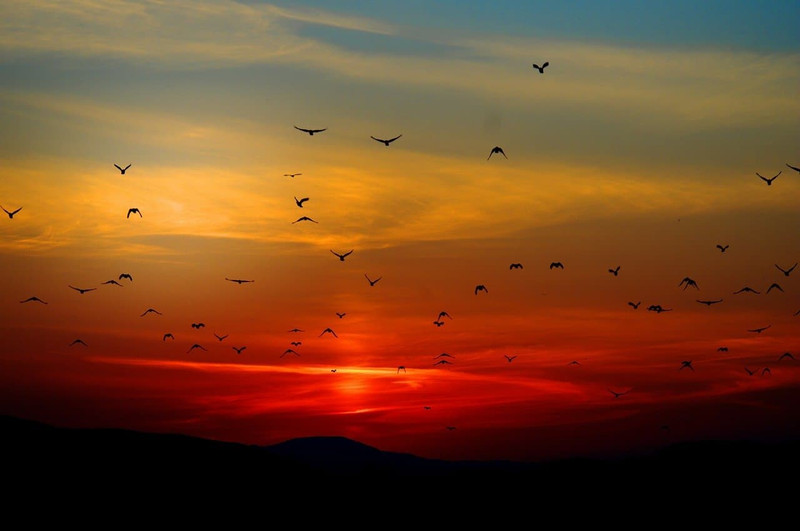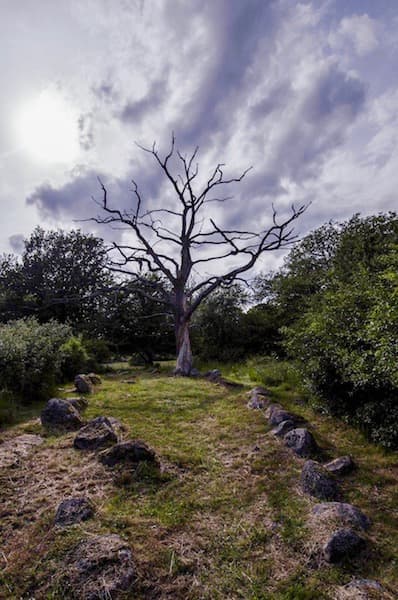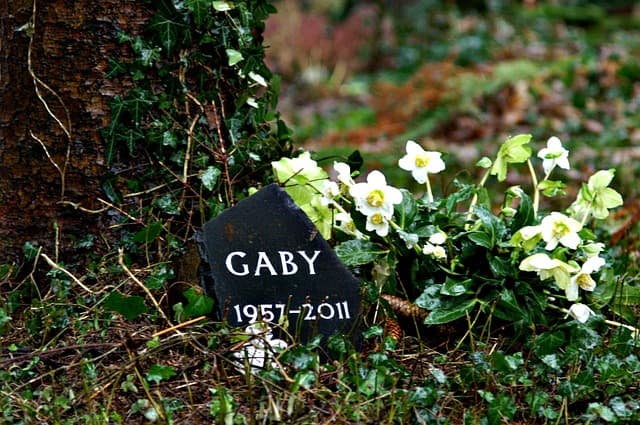
The Afterlife: Sustainable Dying
Published by Anne Altor on Feb 9th 2021
Sustainable Living and the Afterlife: Sustainable Dying
Sustainable living, when it comes full circle, goes hand in hand with sustainable dying. In seeking ways to give back to the Earth, let's remember the opportunity we have at the end of our life. Perhaps the ultimate act of reciprocity is to return what we've borrowed, by allowing our bodies to continue in the natural cycles after we pass on.
In Part 1 of this series, we looked at modern end-of-life practices, including embalming, cremation and casket burial. Those processes aim to prevent decomposition and seal the body away from the Earth. In this post, we'll discuss natural alternatives that bypass the industrialized, profit-driven death industry. Practices that allow us to celebrate life by returning our bodies to the Great Mystery, the source, the elements. Planning and conducting a natural burial allows you and your loved ones to create an intimate, personal ceremony. Natural burial provides ownership over what happens to your body after death and can ensure your values are carried back to the Earth with you!
What is Natural Burial?

Image by Nils GH from Pixabay
Natural burial is just as it sounds–simple burial. Burial unencumbered by the expensive, resource-intensive acts and accoutrements of a society that fears decomposition. All life depends on decomposition. Until recently in human history, natural burial was standard practice.
In a natural burial, the dead body is not embalmed or cremated. It's placed in the ground–directly or in a shroud or biodegradable container–and covered with soil. The body is allowed to decompose, the same as every other living being on Earth does after it dies. You can't push up daisies, trees, butterflies or anything else if you're filled with formaldehyde and sealed in a treated casket.
What are the Legalities of Natural Burial?
Natural burial is legal in all states. The Federal Trade Commission's Funeral Rule mandates that consumers have the freedom to choose only those goods and services they want for a funeral. These rights include the right to not be embalmed, the right to use an "alternative container" (such as cardboard) instead of a casket, and the right to not use a burial vault. However, some private cemeteries do require vaults. And funeral homes may require embalming if a viewing is requested. So inquire with any cemetery or funeral home you might work with to ensure your preferences can be honored.
All funeral homes must provide a "direct burial" option, which is the least expensive type of commercial burial. In direct burial, there is no viewing or visitation. The body is buried shortly after death (within ~24 hrs), so it is not embalmed. However, most states don't require you to use a funeral home at all to handle the dead body and manage the burial.
Where can You have a Natural Burial?
The Green Burial Council describes 3 types of natural burial areas: hybrid cemeteries, natural burial grounds, and conservation burial grounds. Other options are home burial plots and (keep reading – it's cooler than it sounds!) human composting.
? Hybrid cemeteries contain both green burial areas and traditional burial areas within their grounds. Neither embalming nor burial vaults are allowed in green burial sites. Also, any container used for the body must be biodegradable. Some hybrid cemeteries prohibit use of herbicides and pesticides in green burial areas. Swan Point Cemetery in Rhode Island, Greenwood Cemetery in Wisconsin, and Mount Hope Cemetery in Rochester NY are examples of hybrid cemeteries.
? Designated natural burial grounds go a few steps further. These areas restrict the type and size of memorial markers that can be placed on the burial site. Impact assessments are required to make sure burials aren't conducted in ecologically sensitive areas. In addition, activities conducted in a designated natural burial ground must protect soil, water, plant diversity and habitat value. An example of a natural burial ground is the Penn Forest Cemetery in Pennsylvania.
? Conservation burial grounds might be considered the most natural of all. Conservation burial grounds explicitly aim to restore, protect and enhance natural habitat. Burial density is usually a maximum of 300 burials per acre, compared to over 1000/acre in a traditional cemetery. Conservation burial grounds are managed in ways that meet defined conservation goals. Such goals may include creating wildlife habitat, and protecting and restoring ecosystems. Partnerships with conservation groups like land trusts ensure the burial area is legally protected for the long term. Larkspur Conservation Area in Tennessee, the Foxfield Preserve in Ohio, Greenhaven Preserve in South Carolina, and the White Eagle Memorial Preserve Cemetery in Washington state are examples of conservation burial grounds.
? Home burial is an option for people with private property in rural or semi-rural areas. Home burial is legal in all states except California, Indiana, Washington and the District of Columbia. Each state has regulations for home burials. These regulations specify distance of the grave site from water sources and dwellings, how the gravesite should be recorded on the property deed, whether a funeral director must be involved in the burial, and other factors. An overview of state-by-state requirements is available here. A home burial allows for an intimate family ceremony. Loved ones are in charge of maintaining the body and digging the grave, and the deceased can be returned to the soil in a place they've lived and loved. Here are some things to consider regarding home burial:
- You'll need to acquire or sign a death certificate.
- If the body won't be buried for more than 48 hours, refrigeration may be required. Refrigeration can be done with gel packs or dry ice, as described by Peaceful Passage at Home.
- Having a home burial site could impact the resale of your home, especially if the burial area is a prominent part of the property.
? Human composting is a recent addition to sustainable dying options. It's a process developed and currently practiced by Recompose, a Seattle-based company. Here's how it works:
- The dead body is placed in a vessel with wood chips, alfalfa, straw and other plant material.
- The body is kept in the vessel for 30 days, during which time it breaks down into soil.
- After a 2- to 4-week curing period, the compost can be used for plantings or returned to a forest or other ecosystem.
Human composting differs from green burial in that the body is not placed in the ground. No hole needs to be dug, decomposition is accelerated, and a beneficial end product is produced. Washington is currently the only state that has legalized human composting. As seen above, there are other great natural burial options for the rest of us.
How do You Plan a Natural Burial?
Click here for Part 3, which helps you through the steps of planning a green burial.

Image by Ulrich Welzel from Pixabay
